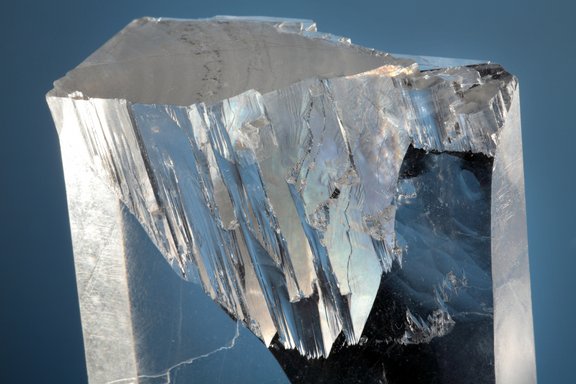One-off Components
Alongside the manufacture of our standard optical components we also produce one-off, specialist components to our client’s specification. These include scintillation detectors to be used in security scanners and X-Ray monochromators for the use in medical technology, to name but a few.
| Scintillator crystals | Some of our crystals are used as scintillation detectors for ionising radiation, for instance, we offer detector arrays for scanners made of CsJ:Ti which are used in airport baggage control and other applications. | |||
|---|---|---|---|---|
| BaF2 | CaF2:Eu | CsJ:Tl | NaJ:Tl | |
| X-Ray monochromators | X-Ray monochromators are produced to your specification, frequently using Lithium fluoride but also many other crystal materials. | ||
|---|---|---|---|
| LiF | NaCl | KBr | |
| Ion-selective Elektrodes | LaF3:Eu | |||
|---|---|---|---|---|
| Cherenkov Counter | ||||
|---|---|---|---|---|
| Deposition Substrates |
| NaCl | KBr | |
|---|---|---|---|---|
| UHV-Viewports | MgF2 | CaF2 |
|---|
We can also provide cleaved crystals for epitaxy experiments.
| Cleaved crystals for epitaxy experiments | All cleavable materials produced in-house can be used for epitaxy experiments as atomically flat surfaces. The following materials are particularly suitable: | ||
|---|---|---|---|
| NaCl | KCl | KBr | |

Measuring Cells and replacement parts for the analysis of liquids and solids
We offer a large assortment of ATR-crystals for use in the field of spectroscopy.
We also offer both dismantleable and sealed cuvettes. For decades, cuvettes have been used for the optical analysis of liquids, oils and pastes. Cuvettes consist of a metal frame and two crystal windows (sometimes Fused Silica windows). The substance to be measured is held between the two windows. To prevent any leakage all lead seals are covered with an amalgamating solution. Where the substance to be measured is viscous, seals made of Teflon are sufficient. The thickness of the substance to be measured is adjusted using a spacer.
We can construct the cuvettes in house to your specification or supply the parts, allowing you to assemble the cuvettes using the following Instructions.
| Cuvettes | We primarily use Teflon seals for dismantleable cuvettes, as these are easier to handle and simple to disassemble. Sealed cuvettes with a pre-determined depth are sealed using lead seals, which are then covered in an amalgamating solution. The seals are then checked and the exact depth of the cuvette measured with the spectrometer. We have spacers in the following standard sizes: |
|---|---|
Spacers
| 22mm x 38,5mm |
Teflon: 100, 170, 200, 500, 1000μm Lead: 50, 75, 100, 150, 175, 200, 500, 6000 μm |
